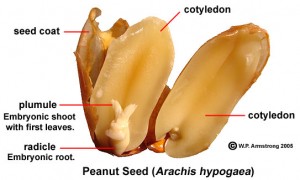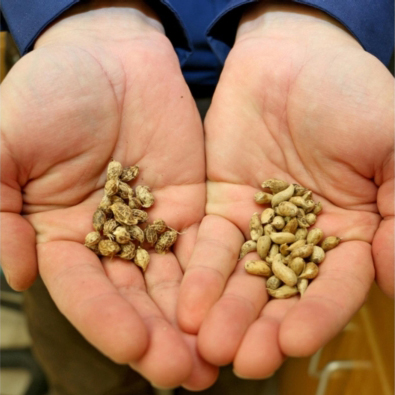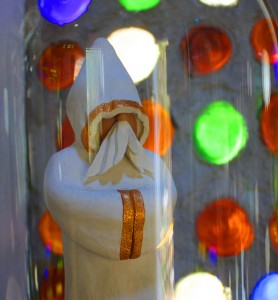 Okay, here’s the big question… Do Arachis duranensis & Arachis ipaensis have a well-formed embryo the way the modern peanut (Arachis hypogaea) does?!?
Okay, here’s the big question… Do Arachis duranensis & Arachis ipaensis have a well-formed embryo the way the modern peanut (Arachis hypogaea) does?!?
The gist:
The modern peanut (Arachis hypogaea) is the result of the hybridization of two older types of Andean peanut. It has 20 pairs of chromosomes—the total from both old species, which have 10 chromosomes each. Scientists always thought—a suspicion now confirmed—that the “parents” of this peanut were the variants Arachis duranensis, very common in the Andean foothills between northwestern Argentina and southeastern Bolivia, and Arachis ipaensis, a species that had been reported but unconfirmed in a Bolivian town several hundred kilometers north, but thought to be extinct, until now. Read more.
The nitty gritty:
Cultivated peanut (Arachis hypogaea) is an allotetraploid with closely related subgenomes of a total size of ~2.7 Gb. This makes the assembly of chromosomal pseudomolecules very challenging. As a foundation to understanding the genome of cultivated peanut, we report the genome sequences of its diploid ancestors (Arachis duranensis and Arachis ipaensis). We show that these genomes are similar to cultivated peanut’s A and B subgenomes and use them to identify candidate disease resistance genes, to guide tetraploid transcript assemblies and to detect genetic exchange between cultivated peanut’s subgenomes. On the basis of remarkably high DNA identity of the A. ipaensis genome and the B subgenome of cultivated peanut and biogeographic evidence, we conclude that A. ipaensis may be a direct descendant of the same population that contributed the B subgenome to cultivated peanut. Read more.

